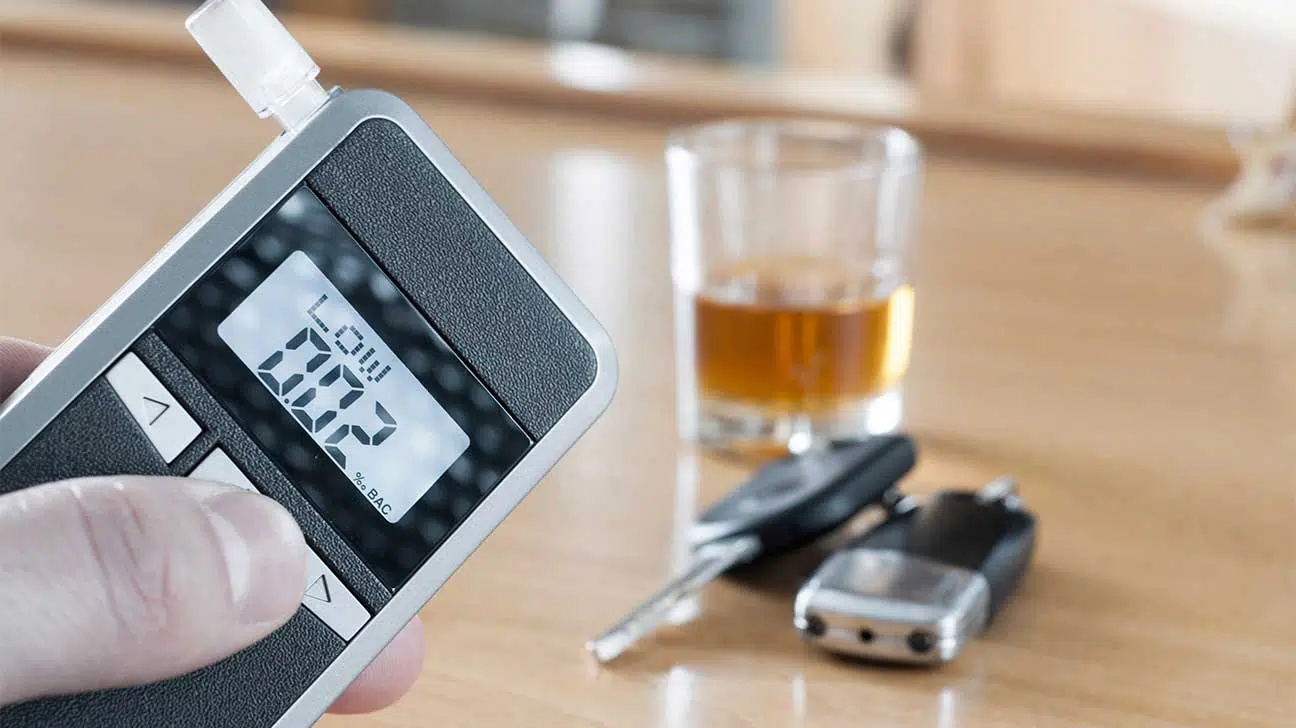How Long Does Alcohol Stay In Your System?
Blood alcohol content can be measured with a breathalyzer test, blood test, saliva test, urine test, or hair follicle test. The detection times vary even based on the type of test and a person’s metabolism, dose, weight, and more.

On average, alcohol is detectable in your system for anywhere between 12 to 24 hours for a breath test and 90 days with a hair drug test.
Each type of test has a different window of detection and is used in different types of situations. The detection time can also be influenced by a person’s gender, age, dosage amount, and more.
Read on to learn more about the testing available for determining blood alcohol levels.
Alcohol Detection Times
Testing for alcohol use is done with a variety of methods, each of which has different pros and cons, as well as windows of effectiveness.
After consumption, alcohol is absorbed into the bloodstream where it’s carried to the brain and other organs.
From here, it can be detected using the testing methods described below.
How Long Can Alcohol Show Up In A Urine Drug Test?
A urine test for alcohol can determine use for up to 3 to 4 days, depending on the amount of alcohol consumed.
This process is done through a urine ethyl glucuronide (EtG) test. Ethyl glucuronide is one of the by-products of ethanol made by the liver to allow the body to excrete the alcohol.
Ethyl glucuronide can be found in a urine sample for a much longer amount of time than in the breath or blood, which is why an ETG test is a common form of determining substance abuse.
Learn more about how long alcohol can be detected in urine.
How Long Can Alcohol Be Detected In Your Blood?
Blood alcohol tests show results for up to 6 hours, a much more narrow detection time frame compared to other average drug test detection times.
However, these results from a blood test are delivered very quickly and can be done even if the person is unconscious or deceased.
Because of this, it is most often used by medical first responders, especially in the case of accidents.
Find out more about how long alcohol can be detected in the blood.
How Long Is Alcohol Detectable On A Breathalyzer?
A breathalyzer test can determine your blood alcohol concentration (BAC) level for 12 to 24 hours.
A breathalyzer works by measuring alcohol exhaled. About 90% of alcohol is absorbed by the body through the stomach and small intestine, and broken down by the liver.
The rest of the substance is eliminated through the breath and urine.
Your BAC as an adult driver cannot legally be over 0.08%, as anything above this level can impact your reaction times.
How Long Is Alcohol Detectable In Saliva?
Alcohol is detectable for roughly 6 hours in saliva. This test is not as common, simply because it is very similar to the breathalyzer test.
The test is often performed via an absorbent swab or strip rubbed on the inside of a person’s cheek. Results are received on-site within minutes of testing.
The procedure is most often used in forensic investigations and occupational, traffic, and domestic accidents.
How Long Can Alcohol Be Detected In Hair?
Hair follicle drug testing is not as common, but it has a wider window of detection (90 days).
Under optimal conditions, hair testing can determine substance use going back years. This means that alcohol can still be detected long after you end alcohol use, sober up, or detox.
For the test, your clinician will take a sample of hair, about 100 to 200 strands, cut as close to the scalp as possible. After it’s tested, you should get results within 48 to 72 hours.
The Purpose Of An Alcohol Drug Test
Alcohol testing can be done for many reasons, many of which involve the law.
Some of these reasons include:
- being suspected of driving while intoxicated
- being arrested for a crime
- monitoring sobriety via a rehab center
- court-ordered alcohol testing
How Is Alcohol Metabolized?
A standard drink in the U.S. contains 14 grams of pure drinking alcohol.
Sizes of drinks vary, but this is roughly equivalent to:
- 12 ounces of beer, usually at 5% alcohol
- 5 ounces of wine, typically around 12% alcohol
- 1.5 ounces of distilled spirits, often about 40% alcohol
After ingestion, an alcoholic beverage is broken down by the body using an enzyme called aldehyde dehydrogenase, and another called alcohol dehydrogenase.
These enzymes help break apart the alcohol molecule into alcohol metabolites, making it possible to eliminate it from the body.
Heavy drinking and binge drinking can have lasting consequences on your body and your mind.
Liver damage, liver disease, cancer, and alcohol poisoning are all side effects of long-term use.
Factors That Affect How Quickly Alcohol Is Metabolized
There are a variety of factors that can determine how fast a person processes alcohol. Some can be adjusted for by the person while drinking, and others are outside their control.
Factors that can affect your alcohol metabolism include, but are not limited to:
- age
- weight
- gender
- genetic factors
- alcohol tolerance level
- amount of alcohol consumed
- percentage of body fat
- whether the alcohol was consumed on an empty stomach
- whether the person has been drinking water
- if the person has any underlying health conditions
Find An Alcohol Addiction Treatment Program
We know that alcohol use disorder is hard, both for the person experiencing it and their loved ones, and that alcohol consumption may sometimes mask co-occurring mental health disorders.
Our dual diagnosis center is here to help. Call Spring Hill Recovery Center to get started with behavioral health treatment and overcome alcohol addiction.
- Medical University of South Carolina — About Urine Ethylglucuronide (EtG) Testing https://medicine.musc.edu/departments/psychiatry/divisions-and-programs/programs/cnl/heavy-alcohol-testing/etg
- National Institute of Health | National Institute on Alcohol Abuse and Alcoholism — Alcohol Metabolism: An Update https://pubs.niaaa.nih.gov/publications/aa72/aa72.htm
- National Institute of Health | National Institute on Drug Abuse — The Science of Drug Testing: How Alcohol Breath Tests Work https://archives.drugabuse.gov/blog/post/science-drug-testing-how-alcohol-breath-tests-work


